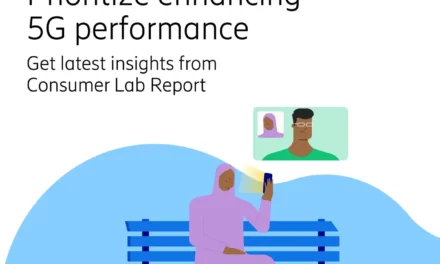
Future Fiber Access Architecture: Drivers and Solutions
The constant growth of high-bandwidth residential services, increased use of cloud services, and emergence of new bandwidth-hungry and latency-sensitive applications require new levels of capacity, reliability, and connection quality in fiber to the premise (FTTP) networks. Additionally, the COVID-19 pandemic has accelerated the use of broadband connectivity in various industry verticals such as education, government, healthcare, and manufacturing.
Operators need to tackle the current and future challenges facing broadband infrastructure by rationalizing network architecture, boosting efficiency, and expanding broadband access to new use cases.
In this blog post, GlobalData’s Emir Halilovic considers new broadband access requirements and the technology solutions that enable FTTP to satisfy them.
COVID-19 has exacerbated and accelerated trends that have been visible in broadband networks for several years now. Broadband network operators globally are seeing the demand for broadband connections increase significantly. According to GlobalData’s forecasts, FTTP connections in the residential segment have reached 671.2 million in 2020, with 13% growth Y-o-Y. The number of FTTP connections in business environments has grown 11% over 2020, reaching 146.4 million. But this quantitative growth is just one of the factors requiring a thorough transformation of FTTP connectivity.

The needs of current and future use cases expand the set of required capabilities for FTTP significantly:
- Higher bandwidth: The bandwidth projections of network planners are usually affected by known traffic patterns and the requirements of currently dominant applications. But the pandemic has shown that the transition to the cloud and online migration of many societal and industry functions requires high bandwidth per connection and lower contention ratios to ensure user experience does not degrade. This is particularly important for essential services like e-government, e-learning, and e-health or demanding leisure activities such as online or cloud gaming, or AR/VR content services.
- Better user experience: With the use cases for fiber access expanding far beyond download-heavy activities such as file transfers and video streaming, operators are seeing a greater focus on lowering system latency, improving connection reliability, and increasing upload/download symmetricity as ways of improving customer experience.
- Higher criticality: The currently ongoing public health crisis has accelerated the use of fiber broadband as a means of supporting business functionality, both as a direct communication channel for SMEs and also as an essential service underpinning work-from-home. This higher criticality translates not only into a need for improving broadband experience across the board, but also into the need for sophisticated QoS mechanisms, allowing for tailoring the broadband experience for different user groups and usage scenarios.
The confluence of these factors translates into the need for a thorough examination of broadband access infrastructure architecture. Changes to broadband architecture should enable the characteristics listed above and, at the same time, ensure the cost-efficient and sustainable growth of operators’ broadband business. The new architecture also needs to be maximally future proof.
Considerations for Future Fiber Access Architecture
Holistic architecture view: Fiber access is usually seen as its own, separate domain, extending from operator’s network edge (CO, or cabinet deployed closer to the customer), to the customer. With demands for connection bandwidth, reliability, and quality increasing, operators need to consider the benefits of enhancing user experience by coordinating, rationalizing, and converging domains involved in providing broadband service, including fixed access (OLT/ONT) and transport.
This holistic architecture should be underpinned by end-to-end SDN control, integrating network elements from different domains into unified logical network nodes. This architectural approach can bring qualitative difference to the way broadband services are provided by enabling the operator to better align access network bandwidth to transport links performance, and minimize the number of “hops” between the communication endpoints, ensuring superior latency characteristics.
- Sophisticated user experience management: SDN control across the board, coupled with automation and orchestration solutions, is also needed to provide the foundation for much improved user experience management. Operators should extend their FTTP networks software functionality to ensure capabilities such as fixed network slicing, graduated SLAs, proactive troubleshooting and maintenance, and granular QoS control. The use of these mechanisms can ensure not only a premium experience to high-value customers, but it can also power offerings like on-demand and temporary speed or latency upgrades, guaranteed bandwidth and latency, and business-level SLAs aimed at work-from-home scenarios.
- Solution flexibility: Fiber access networks are long-life assets, but their requirements are constantly evolving, either through the need to widen coverage by extending the footprint, or by deepening coverage through bringing the operator network edge closer to the customer. In both cases, operators need to count with the need to cover areas with the different density of dwellings, translating into varied connection density and node capacity. These requirements dictate the need for FTTP solutions that can cater to different node sizes, and enable easy and efficient scaling of these nodes, in accordance with operator broadband business expansion and a technological roadmap for migrating legacy technologies to fiber access.
- Enterprise-oriented functionality: With network criticality increasing and operators serving more business and government-oriented use cases, there’s an increasing need for dedicated connectivity solutions optimized for SMEs. However, such services have traditionally been prohibitively costly for them due to the cost of building dedicated physical access lines to SME premises. One way of satisfying the need for dedicated connectivity, while optimizing network deployment costs, is combining FTTP optical distribution networks with dedicated connectivity technologies such as OTN.

The changes to broadband network architecture will therefore be comprehensive, as required by the changing requirements for network architecture, stemming from broadband access business evolution, new use cases, and increased criticality. Operators’ plans for their network evolution direction and technology choices should consider these requirements and technical solutions. Networks built in accordance with these principles will be able to serve current and future demands and enable operators to further evolve their broadband access business profitably.
Huawei’s OptiX SuperSite solution represents the industry’s first architecture enabling the deployment of optical transmission and access network elements at the same site.
This innovation brings three “super” upgrades to the network:
Super architecture: The unique optical waveguide routing technology implements board-level optical cross-connect (OXC), resulting in devices that are 80% smaller. Additionally, OXC capabilities are deployed to the edge, implementing Frog Hop architecture, which facilitates one hop service connection to the cloud in just 1 ms.
Super experience: The point-to-multipoint (P2MP) OTN technology is created for enterprise users and leverages existing fiber resources on the ODN, adopting premium private lines for massive SMEs from various industries. For home broadband users, the industry’s first OLT-based fixed 5G (F5G) super uplink implements E2E slicing and delivers a superior experience.
Super base: Simplified sites are more cost effective, and passive resources are pooled together to unleash the full potential of optical fibers. Additionally, long-term smooth evolution ensures network longevity measured in decades, while network lifecycle TCO is reduced by over 50%.
The solution is provided in three deployment options (outdoor, cabinet, or central office (CO)), depending on operator requirements.
OptiX SuperSite solution offers a high-speed portal to the digital world, providing high-quality, all-service, and one-stop access for smart cities.
About the Author
Emir Halilovic

Emir Halilovic is a Principal Analyst of GlobalData. His focus is on optical transport layer products and technology including WDM, OTN switching, OADMs, packet optical networking, and converged IP/optical platforms. He has a particular interest in how deep changes in networks, like 5G, NFV, and SDN, affect the evolution of transport products and technologies.



















































